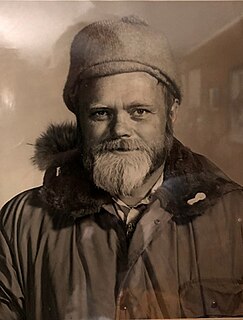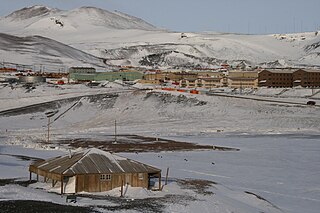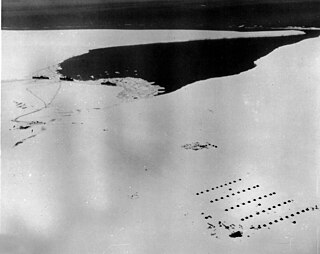 W
WLieutenant Commander James Florian Brandau, US Navy, retired, served multiple tours in Antarctica as a helicopter pilot as part of the U.S. Navy squadron VX-6. Several geological features in Antarctica are named in his honor, and he is featured in the literature and lore from there.
 W
WBrockton Station was an American research (weather) station in Antarctica. It was built by the Seabees and operated by the US Navy during the summer months from October 1965 to February 1972. The station was located 300 miles southeast of McMurdo Station, near the center of the Ross Ice Shelf.
 W
WDiscovery Hut was built by Robert Falcon Scott during the Discovery Expedition of 1901–1904 in 1902 and is located at Hut Point on Ross Island by McMurdo Sound, Antarctica. Visitors to Antarctica, arriving at either the US Base at McMurdo or New Zealand's Scott Base are likely to encounter Discovery Hut as both are located on Hut Point. Discovery Hut is just 300m from McMurdo Base. The hut has been designated a Historic Site or Monument, following a proposal by New Zealand and the United Kingdom to the Antarctic Treaty Consultative Meeting.
 W
WThe Jang Bogo Station in Terra Nova Bay, Antarctica is a permanent South Korean research station. It is the second base of South Korean Antarctic research mission, and the first that is located in mainland Antarctica. Completed in February 2014, the station houses 15 people in winter and 60 in summer in a 4000 square-metre building with three wings, and is one of the larger permanent bases in Antarctica.
 W
WLittle America was a series of Antarctic exploration bases from 1929 to 1958, located on the Ross Ice Shelf, south of the Bay of Whales.
 W
WThe Lower Erebus Hut (LEH) is a permanent field facility located on Mount Erebus on Ross Island, Antarctica. The hut served as the seasonal base of the Mount Erebus Volcano Observatory (MEVO), run by New Mexico Institute of Mining and Technology (NMT). The installation comprises two huts, one kitchen and recreation building and one working and storage building.
 W
WThe McMurdo Station is a United States Antarctic research station on the south tip of Ross Island, which is in the New Zealand–claimed Ross Dependency on the shore of McMurdo Sound in Antarctica. It is operated by the United States through the United States Antarctic Program, a branch of the National Science Foundation. The station is the largest community in Antarctica, capable of supporting up to 1,258 residents, and serves as one of three year-round United States Antarctic science facilities. All personnel and cargo going to or coming from Amundsen–Scott South Pole Station first pass through McMurdo. By road, McMurdo is 3 kilometres from New Zealand's smaller Scott Base.
 W
WScott Base is a New Zealand Antarctic research facility at Pram Point on Ross Island near Mount Erebus in New Zealand's Ross Dependency territorial claim. The research facility was named in honour of Captain Robert Falcon Scott, RN, leader of two British expeditions to the Ross Sea area of Antarctica. The base was set up as support to field research and the centre for research into earth sciences, and now conducts research in many fields, operated by Antarctica New Zealand.
 W
WScott's Hut is a building located on the north shore of Cape Evans on Ross Island in Antarctica. It was erected in 1911 by the British Antarctic Expedition of 1910–1913 led by Robert Falcon Scott. In selecting a base of operations for the 1910–1913 Expedition, Scott rejected the notion of reoccupying the hut he had built by McMurdo Sound during the Discovery Expedition of 1901–1904.
 W
WVanda Station was an Antarctic research base in the western highlands of the Ross Dependency, specifically on the shore of Lake Vanda, at the mouth of Onyx River, in the Wright Valley. The four original station buildings were constructed in the austral summers of 1967–1968 and 1968–1969, just prior to the first winter-over by a five-man team from January to October 19, 1969. Subsequent wintering parties occupied the station in 1970 and 1974. During summer seasons, Vanda station was fully staffed until 1991. Scientific programs principally included meteorology, hydrology, seismology, earth currents, and magnetics. The station was administered by the Department of Scientific and Industrial Research (DSIR), and was supported logistically by the permanent New Zealand research base of Scott Base on Ross Island.
 W
WWorld Park Base was a non-governmental year-round Antarctic base located at Cape Evans on Ross Island in the Ross Dependency. The international environmental organization Greenpeace established World Park Base in 1987 in order to press its demand for the Antarctic Treaty nations to declare all of the continent of Antarctica a World Park. This would make the entire continent off-limits to commercial exploitation and pollution, and permit only limited scientific research. Greenpeace closed down and completely dismantled the base in 1992.
 W
WZucchelli Station is an Italian seasonal research station, located at Terra Nova Bay in Antarctica on a granitic headland along the coast of the Northern Foothills to north-east of Gerlache Inlet. It has been named after Mario Zucchelli, director of the activities, which conducted for sixteen years, for the ENEA-Unità Tecnica Antartitide as part of the National Antarctic Research Program (PNRA).